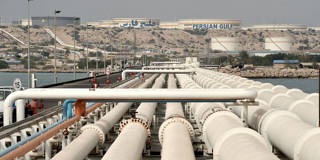If oil prices remain low over the long term, the Middle East could suffer a macroeconomic shock of historic proportions. Although some countries in the region are better positioned for revenue shortfalls than others, all will have to make tough choices now to ensure future prosperity.
CAMBRIDGE – Between 2014 and 2016, Middle Eastern oil-exporting countries’ revenues fell by an average of more than one-third – or 15% of GDP – and their current-account surpluses have swung violently to double-digit deficits. Notwithstanding a small recent uptick, most forecasts predict that oil prices will remain at current levels for the long term. If so, this will deliver a macroeconomic shock of historic proportions and profoundly change the Middle East.

CAMBRIDGE – Between 2014 and 2016, Middle Eastern oil-exporting countries’ revenues fell by an average of more than one-third – or 15% of GDP – and their current-account surpluses have swung violently to double-digit deficits. Notwithstanding a small recent uptick, most forecasts predict that oil prices will remain at current levels for the long term. If so, this will deliver a macroeconomic shock of historic proportions and profoundly change the Middle East.